Remote work has become increasingly prevalent, necessitating effective time-tracking solutions for remote employees. Monitoring and managing their productivity and work hours is crucial for ensuring accountability and maximizing efficiency.
One of the key benefits of remote employee time tracking is improved productivity and accountability. When employees know that their work hours are being monitored, they are more likely to stay focused and avoid distractions. This leads to increased productivity as they are motivated to complete tasks within the allocated time frame.
Additionally, with a time tracking system in place, employers can easily identify any potential issues or bottlenecks in workflow, allowing them to address these concerns promptly and ensure that deadlines are met efficiently.
In this article, we will explore the concept of time tracking for remote employees to provide a comprehensive understanding of this essential aspect of remote work management.
Understanding Team or Employee Time Tracking
Employee time tracking is a valuable process that involves measuring and recording the work hours of employees, enabling a thorough analysis of their performance.
By dividing the total work hours based on individual projects and activities, managers gain better insights into an employee’s productivity. This becomes especially crucial when managing remote teams, as time tracking helps ensure timely project completion.
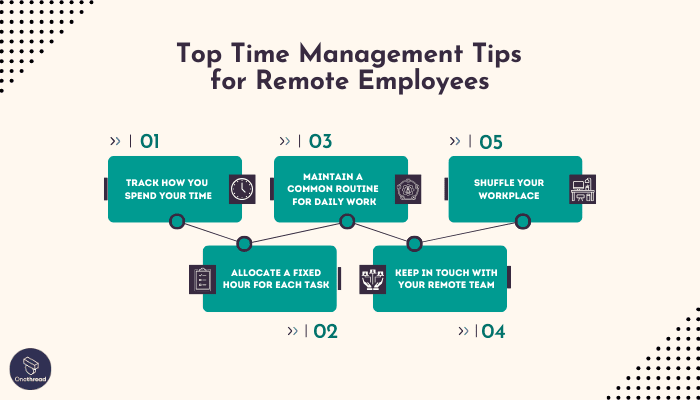
Benefits for Employers
Leaders can effectively monitor their team members’ activities on a daily or hourly basis by utilizing top-rated time-tracking software. This allows them to distinguish between actual work hours and break times, facilitating a clear understanding of employee engagement.
With this information, managers can efficiently allocate resources, manage workloads, and improve overall team productivity.
Benefits for Employees
Time tracking isn’t solely advantageous for employers; employees also benefit from it. Remote employees can use timesheets to identify their most productive hours of the day and pinpoint tasks they can complete more efficiently than others.
This self-reflection helps individuals recognize areas for skill improvement and enhances their overall performance and time management abilities.team or employee time tracking provides benefits to both employers and employees, ensuring effective project management, improved productivity, and individual growth.
The Advantages of Remote Employee Time Tracking
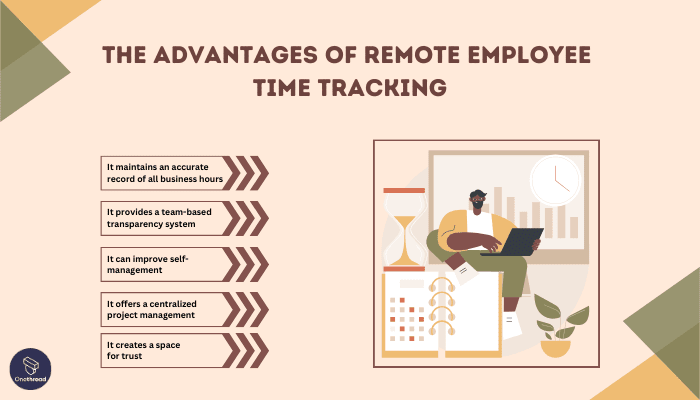
Remote employee time tracking brings several advantages to the table. It not only increases productivity and improves accountability but also facilitates efficient resource allocation and drives performance improvement.
Increased Productivity and Accountability
Remote employee time tracking offers numerous benefits that contribute to increased productivity and improved accountability within your team. By implementing this system, you gain the ability to effortlessly monitor and manage your employees’ work hours, ensuring that everyone remains on track and completes their tasks efficiently.
This not only allows you to identify potential bottlenecks or areas for improvement but also enables you to allocate resources more effectively.
Efficient Resource Allocation and Performance Improvement
One of the significant advantages of time tracking for remote employees is the ability to allocate resources more efficiently. By having a clear overview of your team’s work hours and activities, you can make informed decisions about resource distribution.
This ensures that your employees’ skills and time are utilized optimally, resulting in increased productivity and better overall performance.
Enhanced Accountability and Focus
Implementing remote employee time tracking instills a greater sense of accountability among your team members. When they are aware that their working hours are being recorded and monitored, it encourages them to stay focused and maintain high levels of productivity throughout the day.
This heightened sense of accountability ensures that everyone is actively contributing and pulling their weight in achieving team goals, fostering a more collaborative and results-oriented work environment.
Enhancing Remote Employee Time Tracking: 4 Effective Strategies to Maintain Trust
Implementing employee time tracking is essential for effective remote work management. However, it is crucial to approach this process in a way that does not burden employees or compromise trust. This section presents four actionable strategies to perform employee time tracking while maintaining trust and promoting productivity within a remote team.
1. Regular Task Updates
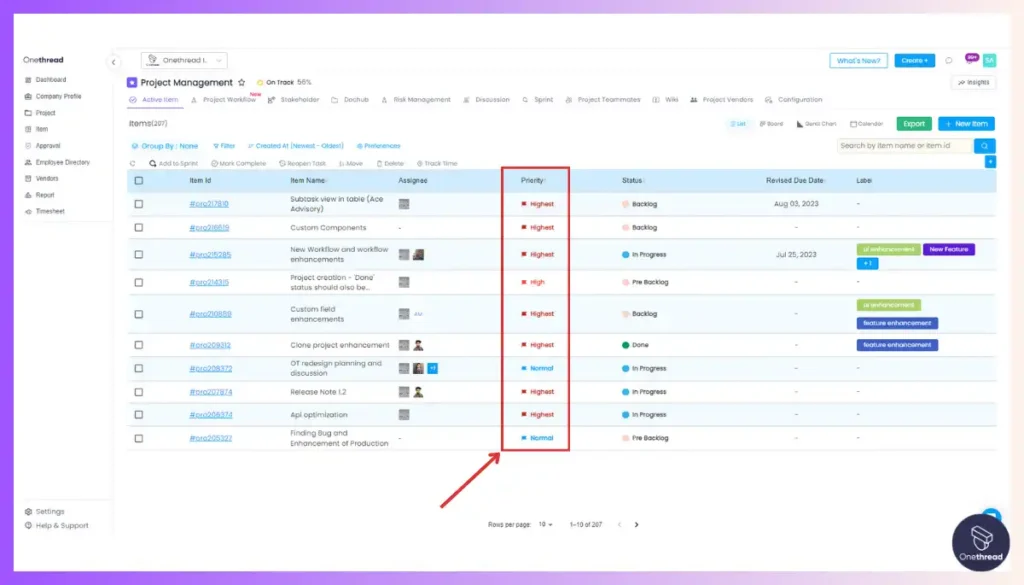
One of the key challenges in managing remote teams is staying updated on each team member’s progress. However, obtaining regular task updates can simplify this process. Requesting each individual to report their current tasks and upcoming assignments is a simple and effective way to achieve this.
The task updates provide valuable information for you as a manager, allowing you to stay informed about the work being done by each team member and estimate task completion time. Asking for updates once or twice a day is a reasonable approach that minimally disrupts workflow.
2. Setting Start and End Dates for Tasks
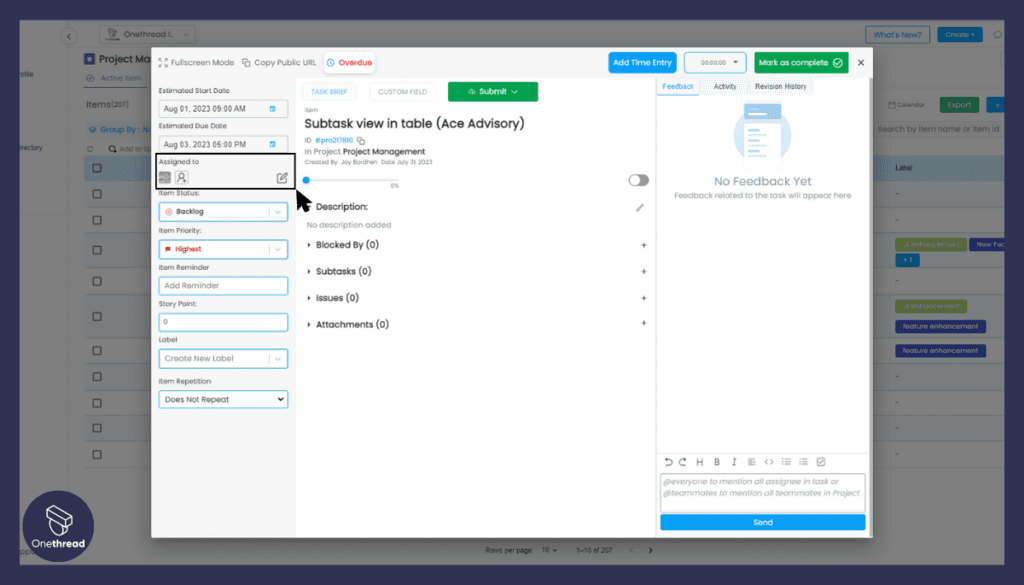
To enhance task accountability and promote timely completion, it is beneficial to assign start and end dates for each task. By providing clear deadlines, remote employees are likely to take their assignments more seriously and make a dedicated effort to meet the defined time limits.
It is important, however, to ensure that the deadlines set are realistic and reasonable, without creating undue pressure or promoting overwork. Reminders can be established to help team members stay aware of their task deadlines.
Important Tip: Balancing Deadlines and Flexibility
When managing task deadlines for remote teams, it is essential to strike a balance between accountability and flexibility. In cases where employees miss deadlines by a small margin, it is recommended to adopt a lenient approach rather than applying strict penalties.
Additionally, recognizing and praising team members who consistently complete their tasks on or before due dates can serve as motivation for others to meet their deadlines. This positive reinforcement can contribute to a productive and timely task management system within the remote team.
By implementing these task management strategies, remote team managers can ensure effective communication, task tracking, and timely completion of assignments, ultimately fostering productivity and success in remote work time tracking.
3. Timers and Timesheets for Work Hour Recording
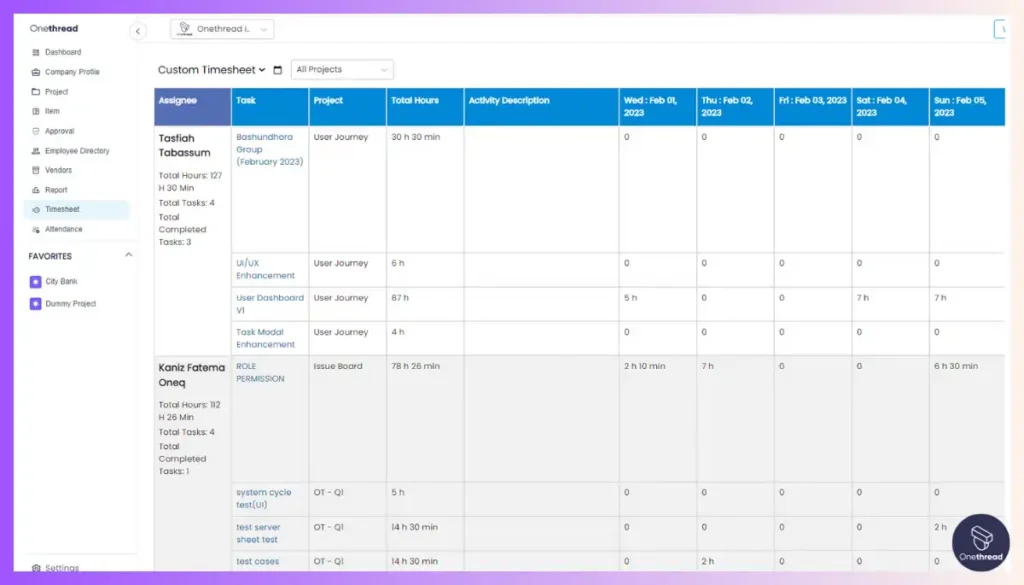
Accurately tracking work hours is crucial for businesses that require precise records of billable time. Employing timers can simplify this process and ensure accurate time tracking. Project management software with built-in timer features or dedicated time-tracking apps are commonly used for this purpose.
Timers automatically record the duration for which an employee works on specific projects or tasks, generating timesheets that provide insights into time allocation for different activities. Many apps and software also allow manual time entries for tasks. Timers and timesheets offer a valuable means to analyze overall work hours and assess employee productivity.
4. Automated Attendance and Activity Tracking
An effective method for remote employee time tracking is capturing clock-in and clock-out times along with their corresponding activities. This approach involves closely monitoring and tracking remote employees’ activities during work hours. Utilizing time-tracking tools enables the collection of information on how employees spend their work hours.
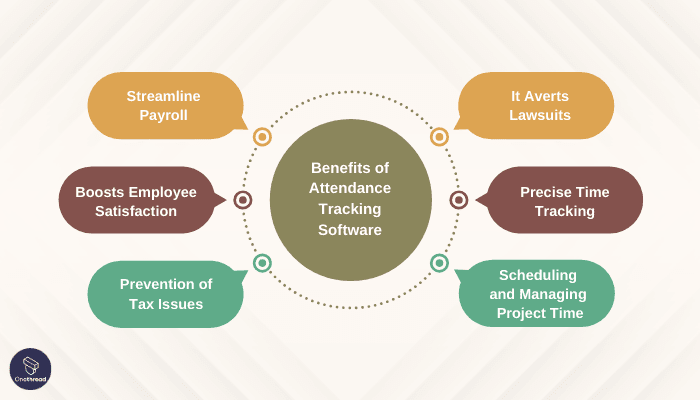
Some time tracking and employee monitoring tools even provide features such as taking periodic screenshots of employees’ screens, tracking visited websites, and automatically detecting idle time or breaks. However, it is advisable to exercise caution and not make the tracking process overly intrusive unless absolutely necessary.
A Comprehensive Overview of Onethread – Time Tracker For Remote Workers
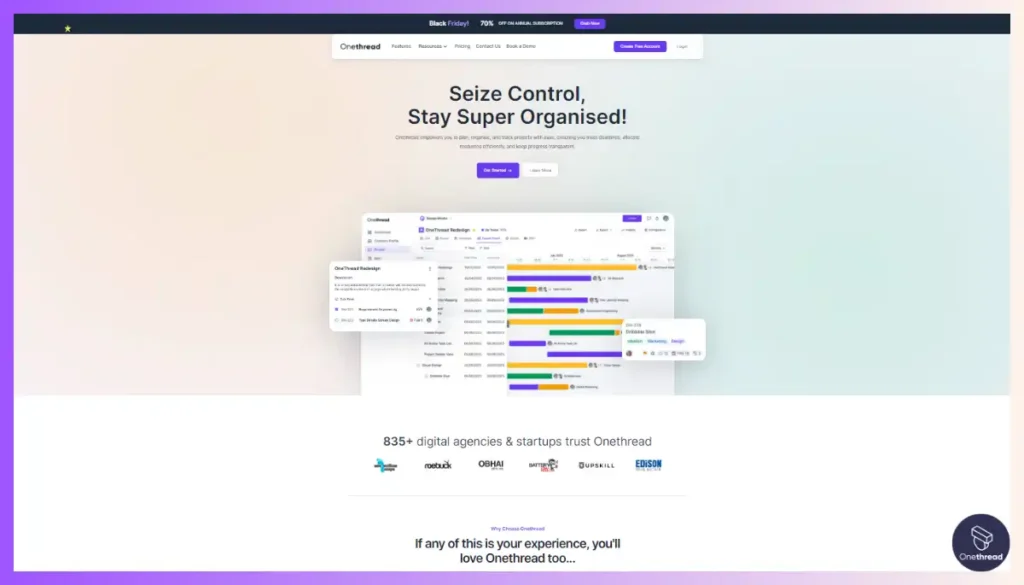
In order to effectively track time for remote employees, having a reliable time tracker for remote workers is essential. Among the top choices available, Onethread stands out as a comprehensive solution that offers a holistic view of all time-related data.
This article provides an in-depth overview of Onethread and explains how it can be utilized to maximize productivity and efficiency.
Onethread serves as an all-in-one project management and collaboration software, equipped with a range of features that enable managers to monitor the activities of remote teams. In addition to timers and timesheets, the software offers task division and assignment capabilities for efficient project management.
- Enhanced Task Management: Onethread enables users to establish task dependencies, set deadlines and time estimates for each task, and adjust work schedules to accommodate shifting deadlines. Additionally, it provides a visual representation of tasks through Gantt Charts, offering a timeline view of project progress.
- Seamless Communication: With an integrated chat interface, Onethread facilitates real-time communication between managers and remote employees. The software ensures prompt updates and notifications for every project-related activity.
Notable Features of Onethread for Remote Team Management and Activity Tracking
Onethread offers several features that are particularly beneficial for managing remote teams and monitoring their activities. These features include:
Kanban Boards – Visualize and Manage Tasks Efficiently
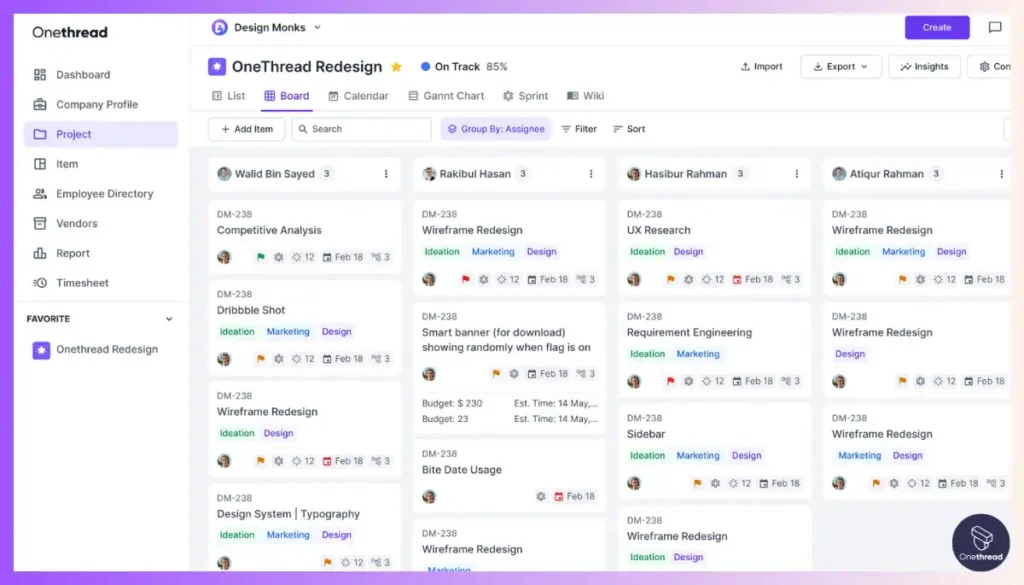
Kanban boards provide a detailed view of tasks, allowing users to track their progress as they move through different stages of the workflow. Additionally, users can easily identify task assignees and seamlessly drag and drop tasks between work stages, ensuring smooth task management.
Custom Reporting – Streamline Project Evaluation
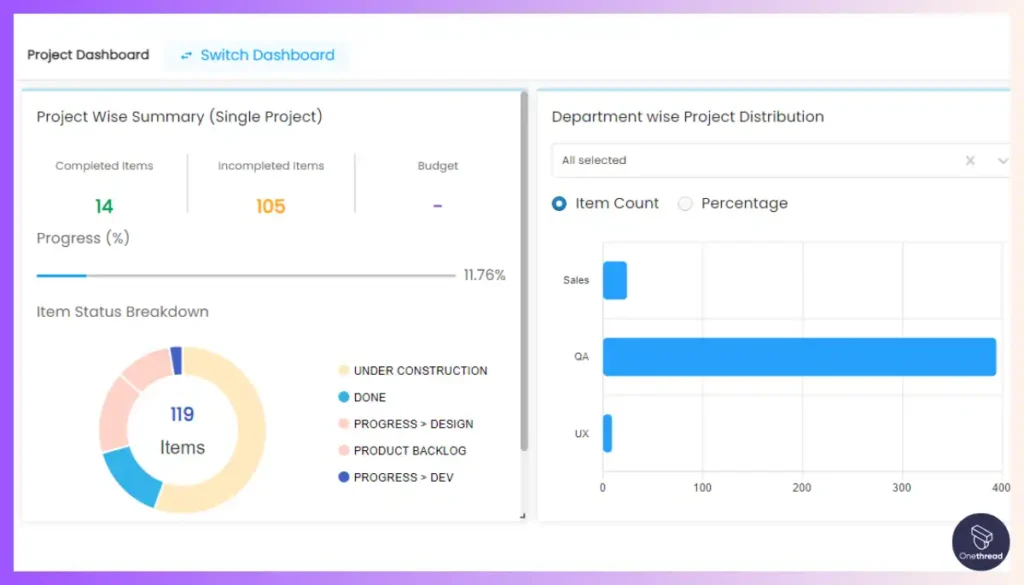
Onethread simplifies the process of generating project and resource reports. With just a single click, users can create reports and customize them according to their requirements.
This flexibility allows for easy modification of report parameters, providing valuable insights to assess project progress and ensure alignment with the intended direction. Resource reports further enable users to gauge employee performance effectively.
Calendar Integration – Effortless Task Scheduling and Tracking
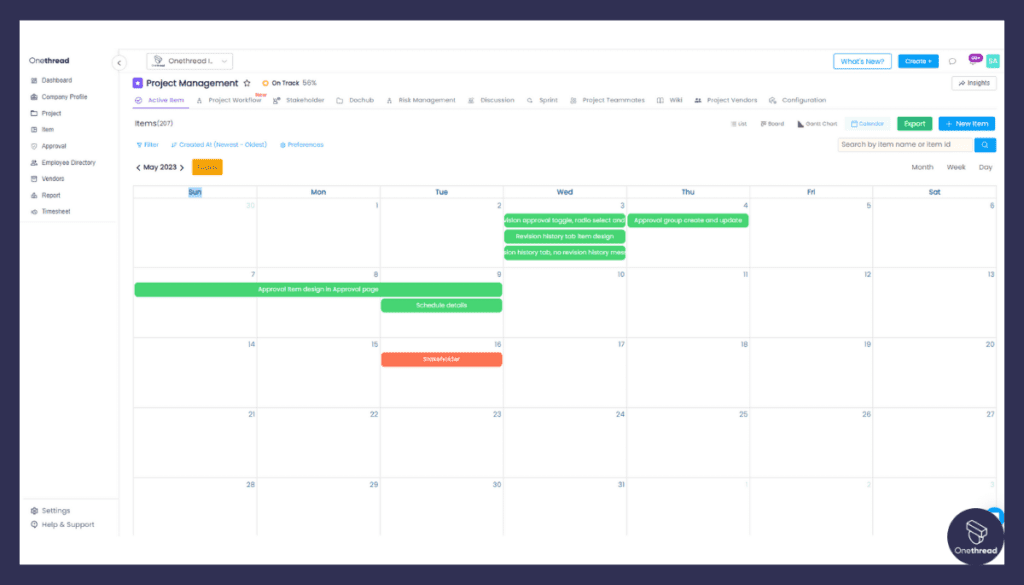
Onethread’s integrated Calendar feature enables seamless scheduling and tracking of tasks, events, and milestones. Both managers and employees can easily access and manage their responsibilities, ensuring clarity regarding tasks and deadlines. The Calendar function promotes efficient time management and helps teams stay organized.
Discussions – Real-time Collaboration and Idea Sharing
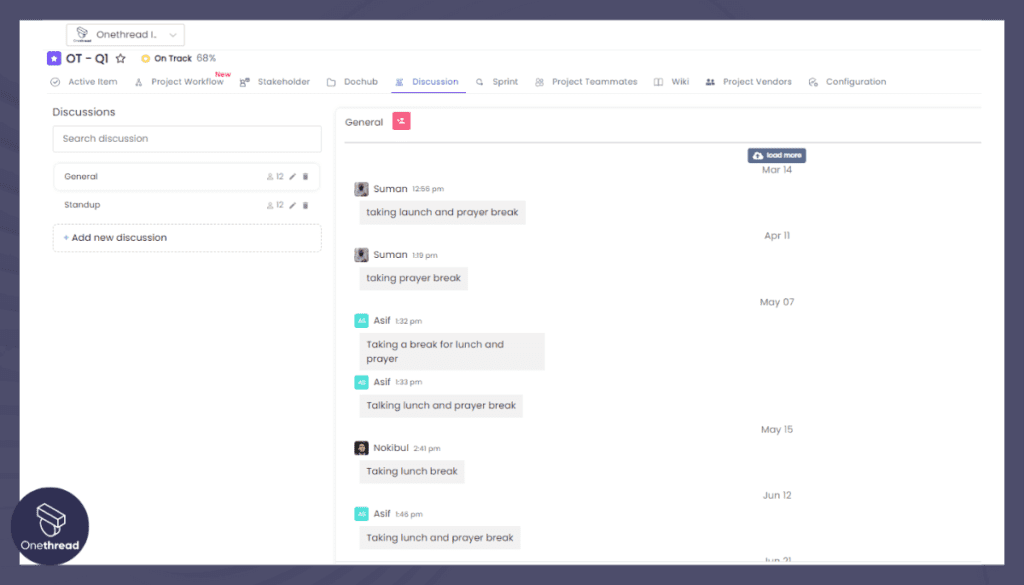
Onethread eliminates the need for lengthy email threads by providing a dedicated space for discussions. Users can create multiple discussion topics, facilitating real-time collaboration and idea-sharing among team members.
By encouraging efficient communication, Onethread ensures that remote employees can discuss important matters without wasting time on email exchanges.
Conclusion
Implementing a robust remote employee time tracking system is essential for organizations embracing remote work. It ensures productivity, helps manage work hours effectively, and promotes transparency and accountability.
Remote employee time tracking is an essential tool for modern businesses with a distributed workforce. It provides the necessary structure and transparency needed to drive productivity, accountability, and ultimately success in today’s fast-paced business environment.
So whether you’re an employer looking to optimize your remote workforce or an employee seeking ways to improve your own efficiency, implementing a reliable time-tracking system is definitely worth considering. By leveraging the right time-tracking methods and tools, organizations can maximize the potential of remote teams and drive success in the evolving landscape of remote work.
Transform your remote workforce with Onethread: Streamline time tracking, enhance productivity, and gain real-time insights. Get started today!
Frequently Asked Questions
What Are The Common Methods Used For Remote Employee Time Tracking?
Common methods of time tracking for remote employees include the use of time tracking software, timesheets, task management tools with built-in timers, and clock-in/clock-out systems. Each method has its own benefits and suitability depending on the organization’s needs and preferences.
How Can Time Tracking Software Benefit Remote Teams?
Time tracking software provides a centralized platform for remote teams to log their working hours, track project progress, and manage tasks. It offers features such as timers, timesheets, project analytics, and reporting, enabling managers to have an overview of remote employees’ activities and assess their productivity effectively.
What Challenges Might Arise With Remote Employee Time Tracking?
Remote employee time tracking can present challenges such as privacy concerns, ensuring accurate reporting, and addressing time zone differences. It is important to strike a balance between tracking productivity and respecting employees’ autonomy and work-life balance.
How Can Remote Employee Time Tracking Foster Better Communication And Collaboration?
Effective time-tracking systems often come with built-in communication and collaboration tools. These features allow remote employees and managers to communicate in real time, share progress updates, discuss task-related matters, and streamline collaboration. This promotes transparency, accountability, and efficient teamwork among remote employees.